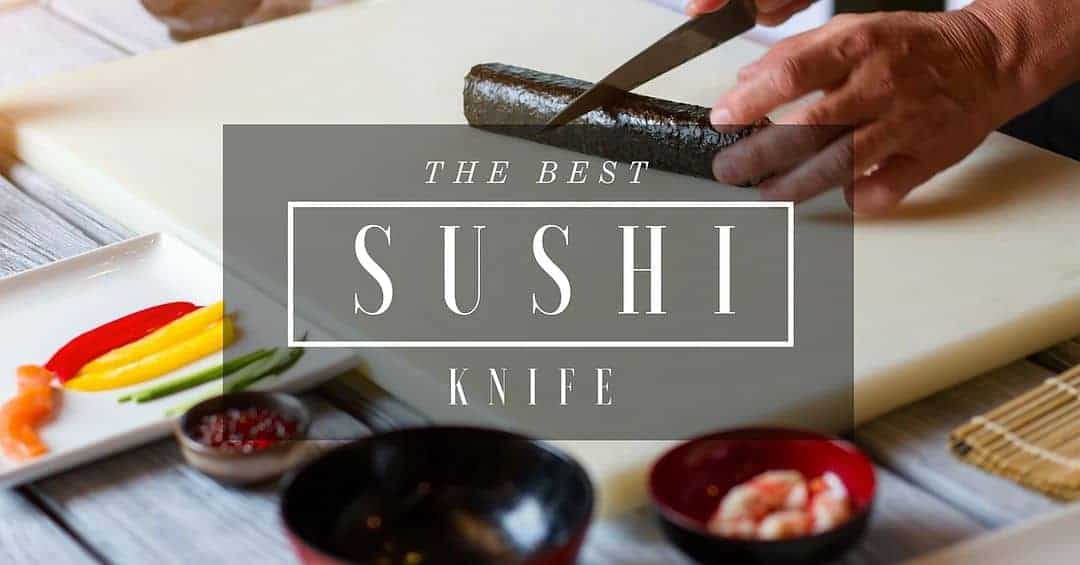If you are as much of a fan of sushi as I am, you've no doubt tried to make this delicious Japanese food at home. Anybody can get started, and all you need are the right ingredients, rolling mat and sushi knife.
Finding the best sushi knife, however, can be tricky if you are a beginner; I know I had trouble because I just wasn't sure what qualities to look for in a good knife.
After a little bit of research and planning, I figured out what knife can get me the best results.
Though there are always going to be personal preferences and stylistic choices, I found that keeping a few key qualities in mind is enough to find the ideal knife for your sushi needs.
More...
Rank | Image | Product Name | Score | |
|---|---|---|---|---|
1
| 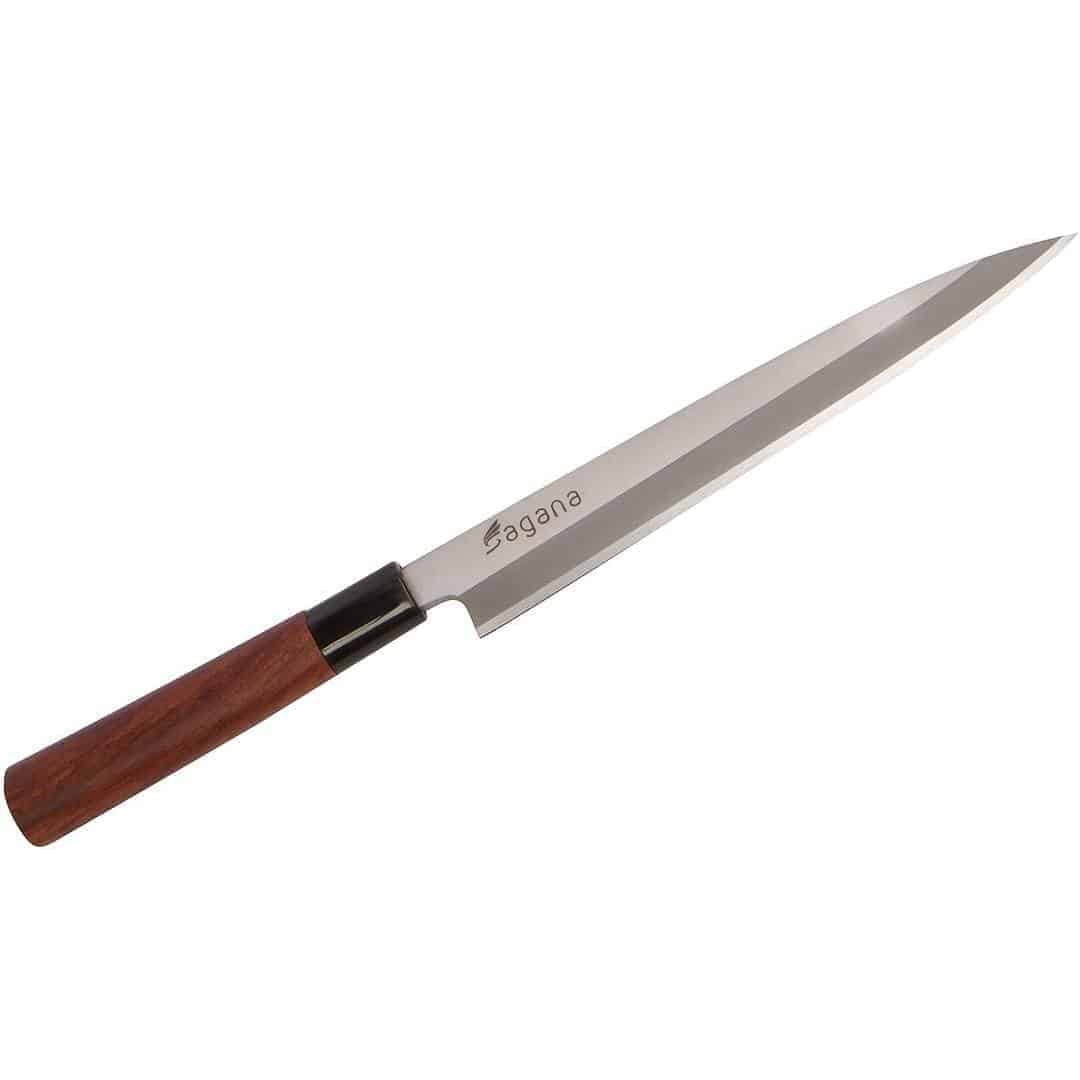
|
99
/100
| ||
2
| 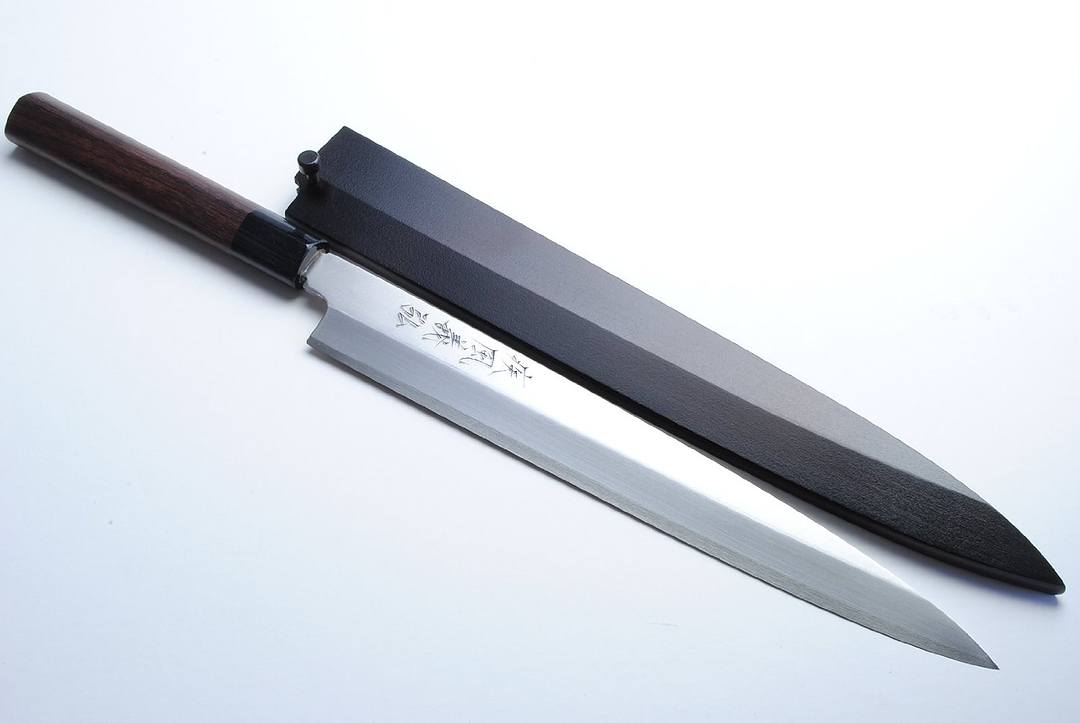
|
93
/100
| ||
3
|
89
/100
| |||
4
| 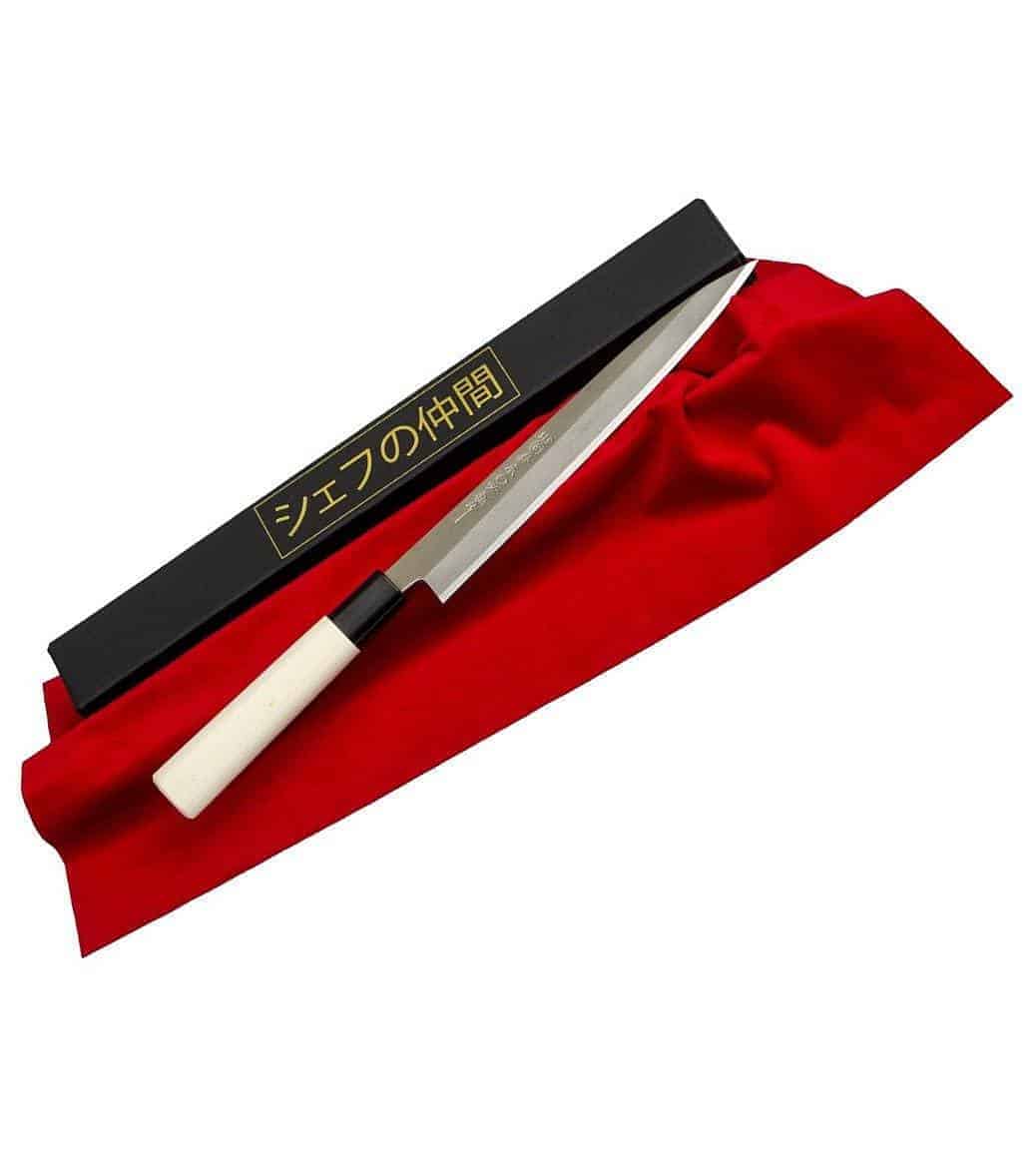
|
84
/100
| ||
5
| 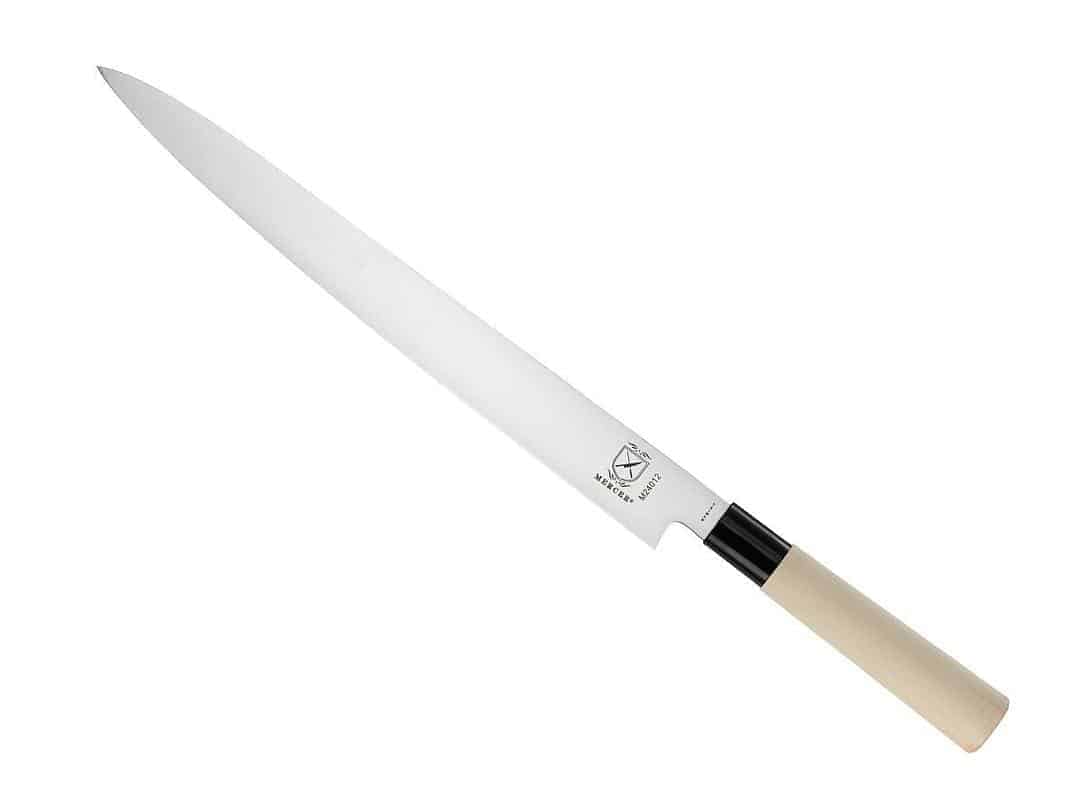
|
80
/100
|
Why Choose a Sushi Knife

My first mistake when I began to experiment with making my own sushi was thinking that just about any sharp knife could be used for the process. I thought that as long as the knife is strong and sharp enough, it can be sufficient to cut through the rice, fish and seaweed.
I knew I was mistaken when I saw that my first few cuts with my trusty knife were just not achieving the effect I wanted.
A regular kitchen knife is simply too unwieldy to achieve the same results as a specialized blade, especially for those who plan on creating lots of delicious sushi
A knife that is specifically designed to cut sushi is much thinner and practical because it is shaped in a way that makes it ideal for the task.
These knives are sharper, lighter and more maneuverable; all of these qualities are ideal for making complicated cuts in fish and cleaner cuts in the arrangement itself.
These knives can be ideal for all types of sushi, too, including rolls and sashimi. Though thinner blades are available that can create a more precise type of cut for more artistic presentation.
Moreover, an all-purpose sushi knife can be your best friend when you are ready to start experimenting with this advanced style of food preparation.
What to Watch For

Finding a good sushi knife can be as easy as locating a good kitchen knife when you know where to search.
There is a large overlap in desirable qualities between kitchen knives and sushi knives, though you may need to be more diligent to find a sushi knife to serve you in the long run.
Like with any other knife, the sharpness and the durability of the sushi knife is paramount to its functionality.
You'll want a knife that not only has an edge but will also be able to keep its edge after extended periods of use. Look for a knife that has the appropriate blade grind cross section, which is designed to provide users with the most mathematically beneficial edge.
Additionally, a good knife should also be shaped for the intended purpose. Most sushi knives are long, thin and sharp, and they're designed to stand up to regular use.
With a thinner blade, you can make more precise cuts, although for an entry-level knife, I recommended that you invest in one that is thick enough to provide you with a comfortable grip. Never discount personal comfort when it comes to choosing the right knife.
Different Types of Knives
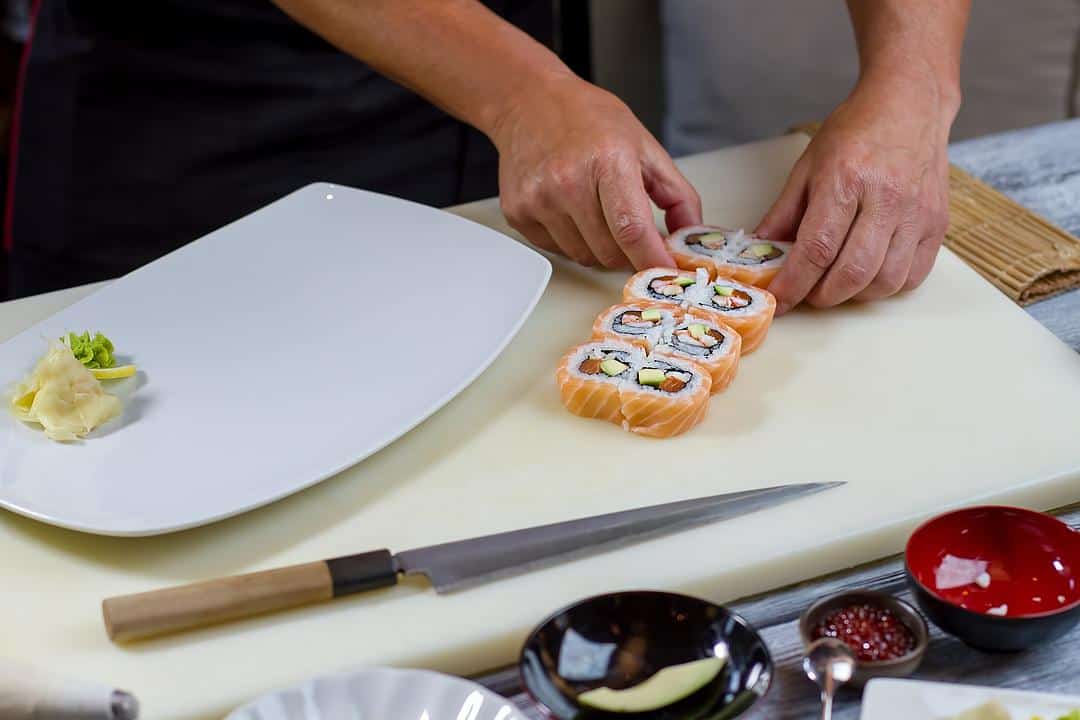
Though a good sushi knife can do it all, there are knives designed to excel at specific functions during the sushi-making process.
Some knives are made to cut thinner and more carefully measured slices of fish while others are designed to cut larger sections of a roll or fish more quickly and efficiently.
Depending on where you are starting in your cooking, you may want to own more than one knife. A thinner knife can be useful to cut the meat, and special fish-preparation knives are ideal during the carving process itself; these knives are perfect if you're filleting an entire fish for your sushi.
However, most sushi chefs agree that a basic knife is enough for most beginners. As you become more comfortable with the cutting, you can invest in specialized knives that can result in more beautifully cut pieces.
Maintenance and Care
Sushi knives typically differ from traditional kitchen knives because they need particular care in order to get the best results.
Some sushi knives are not made from stainless steel but rather a specialized steel alloy that allows the blade to retain a stronger edge.
Depending on the steel of the knife, you may need to regularly sharpen and oil your knife to prevent rust from developing. Some knives have more intensive maintenance procedures than others; these are usually related to their price and material.
Blades that are not properly cared for will begin to develop tiny rust spots, which can mar the integrity of the blade and impart an unwanted metallic taste to the food.
Choose a material according to how prepared you are to maintain your blade, but be aware that you may have to compromise in terms of longevity.
5 of the Best Sushi Knives
Rank | Image | Product Name | Score | |
|---|---|---|---|---|
1
| 
|
99
/100
| ||
2
| 
|
93
/100
| ||
3
|
89
/100
| |||
4
| 
|
84
/100
| ||
5
| 
|
80
/100
|
*Below, you'll find our more detailed reviews, but you can also click the links above to see current prices or read customer reviews on Amazon.

Via Amazon.com
This versatile sushi knife is an excellent choice if you're a beginner. The stainless steel composition is built to last, and it will not only hold its edge for longer but will also provide you with an easier way to reduce rust and corrosion damage.
The handle is elegantly set against the blade, and the single structure is highly guarded against all types of damage.
The way the blade is put together also allows it to stand out as a decorative element, making it ideal for setting up on a stand. For as often as you will use this blade, it makes for a great addition to your kitchen.
Editor's Rating: 99/100
Pros
- This is one of the most accessible blades available, and it's designed for both experts and beginners.
- The highly specialized steel edge is resistant to rust damage and gradual corrosion, which leads to much better long-term edge retention.
- The handle is comfortable and stylish with a natural composition and careful lacquering for aesthetic appeal.
- The versatility of the knife can lend to a long and enjoyable period of use as it's specialized enough for all types of sushi-making uses.
Cons
- It's expensive for an entry-level knife.

Via Amazon.com
With a traditional Japanese design and a powerful composition meant to weather regular use, this exquisite knife can be one of the best options if you're more of an advanced user.
It is built with Hongasumi-grade high carbon steel, which can provide you with additional sharpness and necessary edge retention for a longer period of time.
Though the knife is not built for washing in a dishwasher, it showcases a more rust-resistant design that will allow you to keep rust and damage off of the surface with the appropriate care.
The lacquer-coated wooden sheath is stain- and odor-resistant, and it is just as easy to clean as the rest of the blade.
Editor's Rating: 93/100
Pros
- Holding up to some of the highest standards in the industry, this knife is capable of delivering an unparalleled cutting experience.
- The stronger composition and more reliable blade retention result in a more functional and versatile knife.
- It comes with a sheathe for better storage and protection against the elements.
Cons
- Because of the price, it is not recommended for those who are planning to use it on an infrequent basis.
- The blade is recommended for more advanced users.

Via Amazon.com
This is one of the most advantageous knives available for beginning chefs. Though it may seem a little pricey, it is built to last, and it features a high carbon construction that will stand up to repeated use.
The blade features a rust-resistant edge that can retain its sharpness for extended periods of time while preventing the metal itself from imparting a metallic, tangy taste to the food.
The beautiful rosewood handle is built to fit comfortably in your hands, which makes it ideal for both right-handed and left-handed users. The knife also comes with a handy sheathe for easier storage and cleaning.
Editor's Rating: 89/100
Pros
- The use of molybdenum steel in the construction of the knife results in a much more durable and powerful composition.
- The knife can resist misuse better than many other blades, which allows beginners to make more mistakes safely as they learn how to prepare sushi.
- The powerful, sharp surface is easier to use when cutting complicated arrangements.
Cons
- This knife is not recommended for dishwasher cleaning, which may lead to a more intensive cleaning process by hand.
- The price might be high for those who are not prepared to budget for the knife.

Via Amazon.com
This is one of the most advantageous knives available for beginning chefs. Though it may seem a little pricey, it is built to last, and it features a high carbon construction that will stand up to repeated use.
The blade features a rust-resistant edge that can retain its sharpness for extended periods of time while preventing the metal itself from imparting a metallic, tangy taste to the food.
The beautiful rosewood handle is built to fit comfortably in your hands, which makes it ideal for both right-handed and left-handed users. The knife also comes with a handy sheathe for easier storage and cleaning.
Editor's Rating: 84/100
Pros
- The knife is built ultrasharp, allowing it to retain its edge for longer and stand up to repeated use without significant damage.
- The traditional creation techniques result in a powerful triple-riveted blade that comes with a seamless black synthetic handle for easier gripping and long-term use.
Cons
- Because it is relatively unremarkable in its construction, some shoppers may find the knife to be a little pricey for its composition.
- It works well for sushi applications, but it is not ideal for specific tasks, such as filleting, that may be better suited for other knives.

Via Amazon.com
The real wooden handle of the Mercer Culinary Sashimi Knife will provide you with the right grip you need for all types of cuts.
The blade is durable and built to resist all types of acidic and environmental corrosion, although it may not stand up well to the harsh chemicals of a machine dishwasher.
The right type of washing by hand will result in a better longevity, and for its affordable price, you may feel more comfortable making mistakes with the blade if you're a beginner.
It is long and thin enough to make precise cuts while still being strong enough to take care of rolls and complicated configurations, which will help you as you become more familiar with making sushi.
Editor's Rating: 80/100
Pros
- The sharpened edges result in a better cutting process, which can reduce instances of bruised food.
- The more powerful composition will allow you to afford incidents of accidental misuse.
- The comfortable handle is designed for both left-handed and right-handed users.
Cons
- Though an excellent entry-level knife, it is not recommended if you're more specialized and interested in branching out into a specific blade.
My Conclusion
Though many of the knives are functional enough for an aspiring sushi chef, the Sagana Kitchenware Sushi Knife stands out as the clear winner. I strongly recommend this knife because it combines all of the benefits of the previous knives into one affordable package.
The knife is highly resistant to rust damage and edge degradation, which means that only a minimal amount of maintenance is necessary to keep it clean.
Unfortunately, the knife is not safe to use in a dishwasher, but I like to make cleaning and oiling the knife a regular part of my after-sushi ritual.
The knife also stands out because it is particularly well-balanced, making it easier to use as a learning tool. It provides beginners with the accessibility they need, which can lead to easier preparation and more skilled arrangements in the future.
If you found this guide helpful, be sure to leave a comment in the section below! Check out the knives for yourself and see which one can get you the results you need.

